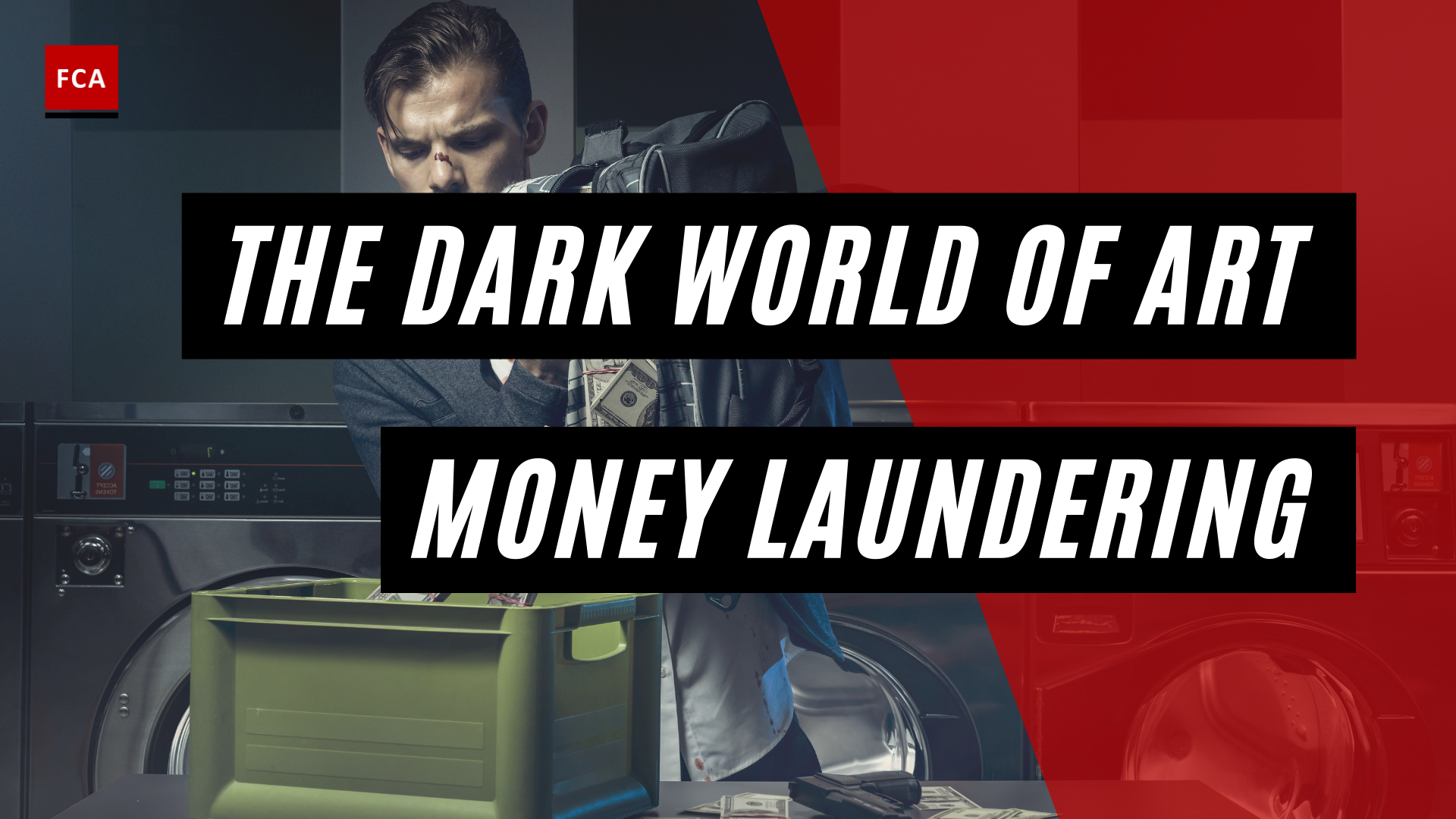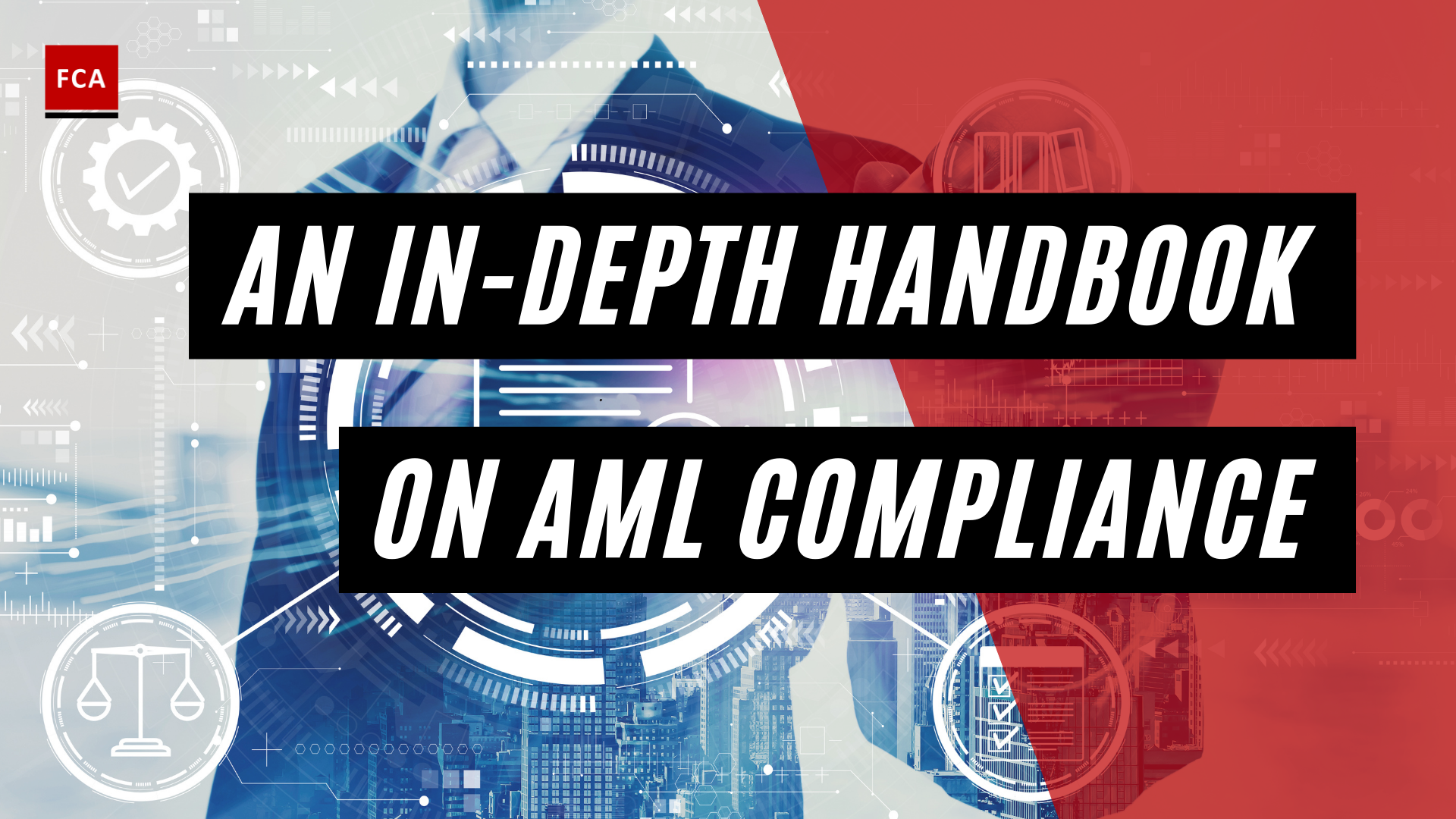Understanding Money Laundering in Real Estate
Money laundering poses a significant threat to the real estate sector, making it crucial for professionals to understand the vulnerabilities and risks associated with real estate transactions. By gaining a deeper understanding of these issues, compliance officers and professionals working in risk management can effectively mitigate the risks of money laundering in real estate.
The Vulnerability of the Real Estate Sector
Real estate is a preferred sector for money laundering activities due to its ability to absorb large sums of money and the presence of various loopholes. The combination of secrecy behind shell companies and the vast amounts of money involved in real estate deals makes the sector susceptible to money laundering (Tookitaki). Criminals exploit these vulnerabilities to legitimize illicit funds and conceal the proceeds of criminal activities.
Shell companies and their complex ownership structures make them an attractive tool for money laundering in real estate transactions. These companies facilitate anonymity and complexity in transactions, making it challenging to trace the true beneficial owners and identify suspicious activities. Compliance officers must stay informed about the latest money laundering trends in the real estate sector to effectively detect and prevent illicit activities.
Money Laundering Risks and Real Estate Transactions
Real estate transactions involve significant amounts of money and often multiple parties, creating opportunities for anonymity and complexity. This, in turn, increases the risks of money laundering in the sector. Criminals can exploit real estate transactions to hide the proceeds of criminal activities, disguise the ownership of illicit funds, or even fund terrorist activities (National Association of Realtors).
To combat money laundering risks in real estate, it is essential for financial institutions and real estate professionals to implement robust compliance measures. Compliance officers play a critical role in ensuring adherence to regulations and preventing money laundering activities linked to real estate transactions. By adopting efficient detection and prevention mechanisms, the real estate sector can safeguard the economy and the integrity of the financial system.
To effectively address money laundering risks in real estate, professionals should focus on areas such as risk assessments, customer due diligence, recordkeeping, and monitoring. By implementing risk-based measures and reporting suspicious activities to relevant authorities, real estate professionals can contribute to combating money laundering and ensuring the integrity of the sector.
Understanding the vulnerabilities and risks associated with money laundering in real estate is crucial for professionals working in compliance, risk management, and anti-money laundering. By staying informed and implementing effective compliance strategies, the real estate sector can actively contribute to the global efforts to combat money laundering and protect the integrity of financial systems.
Identifying Money Laundering Red Flags in Real Estate
To effectively combat money laundering in the real estate industry, professionals need to be aware of the red flags that indicate potential suspicious activities. By recognizing these warning signs, they can implement robust anti-money laundering (AML) measures and reporting protocols. Here are some red flags for suspicious activities and the techniques utilized by criminals in real estate transactions.
Red Flags for Suspicious Activities
-
Cash Transactions: Criminals often use cash to purchase real estate, as it allows them to hide their ownership and the illicit origins of their funds. Cash transactions, especially those involving large sums of money, should be closely scrutinized to ensure compliance with AML regulations.
-
Shell Companies and Hidden Ownership: Criminals employ intricate webs of shell companies or hidden property ownership to obscure the true identity of real estate owners. This makes it challenging for law enforcement agencies to trace the illicit origins of funds. Real estate professionals should conduct thorough due diligence to identify any suspicious ownership structures.
-
Property Flipping: Property flipping, where properties are bought and quickly resold, can be a technique used by criminals to legitimize their illicit funds. Unusually high profits or frequent property flips without justifiable reasons should raise red flags.
-
Inflated Property Values: Criminals may manipulate property values to facilitate money laundering. Inflated property prices can help disguise the true value of illicit funds used for the purchase. Real estate professionals should be vigilant when encountering properties with prices that seem significantly higher than market norms.
-
Complex Mortgage Fraud Schemes: Criminals engage in complex mortgage fraud schemes, such as falsifying income documents or misrepresenting the source of funds, to obtain mortgages for money laundering purposes. Unusual or suspicious mortgage applications should be thoroughly investigated.
Techniques and Strategies Used by Criminals
-
Structuring Cash Deposits: Criminals may deposit cash across multiple banks in amounts below the reporting threshold to avoid triggering suspicion. They may then use these funds to purchase real estate through bank checks or other legitimate forms of payment. Real estate professionals should be cautious when dealing with clients who make multiple cash deposits or exhibit unusual transaction patterns.
-
Manipulating Lease Agreements: Criminals may manipulate lease agreements to launder money. This can involve fictitious tenants, inflated rental income, or irregular lease terms. Real estate professionals should carefully scrutinize lease agreements and verify the legitimacy of rental income.
-
Facilitating Money Laundering: Some individuals within the real estate industry may knowingly participate in money laundering schemes by assisting criminals in acquiring or disposing of properties. These facilitators may include real estate agents, lawyers, or mortgage brokers. It’s crucial for professionals to be vigilant and report any suspicious activities to the appropriate authorities.
By being aware of these red flags and techniques employed by criminals, real estate professionals can play a vital role in combating money laundering. Implementing robust AML compliance measures, conducting thorough due diligence, and reporting any suspicious activities are crucial steps in safeguarding the real estate sector from financial crime. For more information on AML compliance in real estate, refer to our article on real estate AML compliance.
The Role of Compliance Officers in Mitigating Money Laundering Risks
In the real estate sector, compliance officers play a crucial role in mitigating the risks associated with money laundering. With the vulnerability of the real estate industry to money laundering activities, compliance officers must remain vigilant when dealing with real estate transactions to prevent illicit financial activities. They are responsible for implementing vigilance and compliance measures, as well as developing strategies tailored to real estate professionals.
Vigilance and Compliance Measures
Compliance officers in the real estate sector must maintain a high level of vigilance to detect and prevent money laundering activities. This involves staying informed about the latest money laundering trends and understanding the techniques and strategies used by criminals to exploit the industry. By recognizing the red flags for suspicious activities in real estate transactions, compliance officers can identify potential money laundering risks and take appropriate action.
Some of the common red flags that compliance officers should be aware of include:
- Large cash payments or transactions involving significant amounts of money.
- Complex financing arrangements that could be used to disguise the true source of funds.
- Lack of transparency in the ownership structure, such as the use of shell companies or nominee arrangements.
- Involvement of high-risk jurisdictions known for money laundering activities.
- Unusual or disproportionate pricing for the property.
By understanding these red flags, compliance officers can enhance their ability to detect suspicious activities and take appropriate measures to mitigate money laundering risks (National Association of Realtors).
Compliance Strategies for Real Estate Professionals
Compliance officers are responsible for developing and implementing compliance strategies specific to the real estate industry. These strategies aim to ensure that real estate professionals comply with anti-money laundering regulations and effectively mitigate money laundering risks.
One essential aspect of compliance strategies is the establishment of robust customer due diligence processes. Real estate professionals should conduct thorough background checks on clients, verifying their identities and understanding the nature and purpose of the business relationship. This helps ensure transparency and prevent the misuse of real estate for illicit purposes.
Additionally, compliance officers should implement risk-based measures that align with the regulatory requirements and the specific risks associated with the real estate sector. This includes ongoing monitoring of transactions, recordkeeping, and reporting of suspicious activities to relevant authorities. By promptly reporting suspicious activities, compliance officers contribute to the overall efforts in combating money laundering in the real estate industry.
Compliance officers also play a crucial role in educating and training real estate professionals on anti-money laundering measures. By providing guidance and raising awareness about money laundering risks, compliance officers empower real estate professionals to actively participate in the prevention of illicit financial activities.
To effectively mitigate money laundering risks, compliance officers in the real estate sector need to stay updated with regulatory developments, industry best practices, and emerging trends. By continuously evaluating and enhancing compliance strategies, compliance officers contribute to maintaining the integrity of the real estate industry and safeguarding it against money laundering threats.
Regulatory Efforts to Combat Money Laundering in Real Estate
As the real estate sector remains vulnerable to money laundering activities, various regulatory efforts have been implemented to combat this illicit practice. Government initiatives and regulations play a crucial role in establishing a framework that promotes transparency and enhances due diligence in real estate transactions.
Government Initiatives and Regulations
To address the risks associated with money laundering in real estate, the Financial Crimes Enforcement Network (FinCEN) has taken several steps. One of these initiatives is the issuance of Geographic Targeting Orders (GTOs) in 2016, which were subsequently renewed. The GTOs require U.S. title insurance companies in specific locations to identify the natural persons behind shell companies used in all-cash purchases of high-end residential real estate (TIC Company). This measure aims to increase transparency and deter the use of anonymous entities for illicit purposes.
In addition to the GTOs, FinCEN has proposed new regulations to further strengthen anti-money laundering (AML) measures in the real estate sector. These regulations would require certain participants in residential real estate transactions to establish AML programs and report suspicious activities to the authorities. The proposed rules are designed to promote greater due diligence and monitoring of transactions, bolstering safeguards against money laundering in the real estate industry (Federal Register).
Furthermore, FinCEN is considering extending the scope of the Bank Secrecy Act (BSA) to cover certain transactions in the real estate sector. This extension aims to enhance transaction transparency and facilitate the detection of suspicious activities involving illicit funds. By expanding the regulatory framework, authorities seek to mitigate the money laundering risks associated with real estate transactions.
To facilitate the collection and sharing of beneficial ownership information, FinCEN has also proposed the establishment of an electronic database. This database would further strengthen the government’s efforts to combat money laundering in real estate by increasing transparency and providing a comprehensive view of beneficial ownership information (Federal Register). These efforts align with the Title IV of the Anti-Money Laundering Act of 2020, which requires the disclosure of beneficial owners in real estate transactions to prevent money laundering and the financing of terrorism (Federal Register).
Proposed Anti-Money Laundering Regulations
The proposed regulations by FinCEN aim to strengthen the anti-money laundering framework in the real estate sector. They require increased due diligence, monitoring, and reporting of suspicious activities by participants involved in real estate transactions. These regulations are designed to enhance the detection and prevention of money laundering and promote greater transparency in the industry.
By establishing comprehensive AML regulations, governments and regulatory bodies strive to create an environment where real estate professionals, financial institutions, and other stakeholders are equipped with the necessary tools and systems to identify and report potential money laundering activities. These measures are part of a broader global effort to combat money laundering and protect the integrity of the real estate market.
As the regulatory landscape continues to evolve, it is crucial for professionals working in compliance, risk management, anti-money laundering, and anti-financial crime to stay informed about the latest regulations and requirements. Adhering to these regulations and implementing robust AML compliance programs can help safeguard the real estate sector from the risks posed by money laundering activities.
Real Estate Money Laundering Trends and Statistics
To effectively combat money laundering in the real estate sector, it is crucial to stay informed about global money laundering trends and identify high-risk countries and hotspots. Understanding these trends and statistics helps compliance officers and professionals working in the real estate industry to develop targeted strategies to mitigate money laundering risks.
Global Money Laundering Trends
Money laundering through real estate is a significant concern worldwide. According to a report by Global Financial Integrity (GFI), over $2.3 billion was laundered through U.S. real estate from 2015 to 2021 (ComplyAdvantage). This highlights the magnitude of illicit activities involving real estate and the need for robust anti-money laundering measures.
While money laundering trends can vary across regions, some common methods employed by criminals include:
-
Structuring Transactions: Criminals may split large sums of money into smaller transactions to avoid detection thresholds and attract less attention.
-
Shell Companies: The misuse of shell companies remains a prevalent method for money laundering in real estate transactions. Criminals take advantage of the secrecy behind shell companies and their complex ownership structures to legitimize illicit funds. Shell companies provide anonymity and complexity, making it challenging for compliance officers to trace the beneficial owners and ensure transparency in transactions.
-
High-Risk Jurisdictions: Certain jurisdictions are deemed high-risk due to weak anti-money laundering regulations and enforcement. Criminals may exploit these jurisdictions to conduct illicit real estate transactions, making it crucial for real estate professionals to be vigilant when dealing with such jurisdictions.
It is essential for compliance officers and real estate professionals to remain updated on emerging money laundering trends and adapt their strategies accordingly. By understanding how criminals operate and the methods they employ, professionals can enhance their ability to detect and prevent money laundering activities.
High-Risk Countries and Hotspots
Money laundering risks can vary across countries and regions. Some countries are particularly susceptible to money laundering activities in the real estate sector, either due to regulatory loopholes, weak enforcement, or other factors. Identifying these high-risk countries and hotspots is crucial for effective risk management and due diligence.
The Basel Anti-Money Laundering (AML) Index is a useful tool for evaluating money laundering risks in different countries. It provides a comprehensive assessment of the vulnerability of countries to money laundering and terrorist financing activities. Countries with higher scores on the Basel AML Index indicate a higher risk of money laundering.
To effectively mitigate money laundering risks in real estate transactions, compliance officers and real estate professionals should pay particular attention to countries identified as high-risk on the Basel AML Index. Implementing stringent compliance measures, conducting thorough due diligence, and enhancing monitoring practices are essential when dealing with transactions involving high-risk countries.
By staying informed about global money laundering trends and identifying high-risk countries and hotspots, compliance officers and real estate professionals can take proactive measures to combat money laundering in the real estate sector. The adoption of robust compliance strategies, risk-based approaches, and collaboration with regulatory authorities is crucial to safeguard the integrity of the real estate market and protect against illicit financial activities.
The Importance of Due Diligence and Reporting
In the real estate sector, due diligence and reporting play a crucial role in mitigating the risks associated with money laundering. Professionals involved in real estate transactions, such as real estate agents, lawyers, and financial institutions, act as gatekeepers to prevent money laundering and ensure compliance with anti-money laundering (AML) regulations.
Gatekeepers and Their Responsibilities
Real estate professionals need to be vigilant as they are particularly vulnerable to money laundering risks. Real estate transactions often involve large sums of money, making it an appealing choice for criminals seeking to integrate their illegal funds into the legitimate economy. The cash-intensive nature of these transactions, along with the involvement of multiple parties, creates opportunities for anonymity and complexity, increasing the risk of money laundering.
As gatekeepers, real estate professionals have a responsibility to conduct thorough due diligence on their clients and the transactions they facilitate. This includes verifying the identity of the parties involved, assessing the source of funds, and understanding the nature of the transaction. By implementing robust real estate AML compliance measures, professionals can identify and mitigate potential money laundering risks.
Detecting and Reporting Suspicious Activities
To effectively combat money laundering in real estate, professionals must be able to detect and report suspicious activities. Criminals employ various techniques in the real estate industry to launder money, such as property flipping, inflating property values, manipulating lease agreements, and engaging in complex mortgage fraud schemes (Sanction Scanner Blog).
To identify potential money laundering activities, professionals should be alert to certain real estate AML red flags. These red flags may include:
- Unusually large cash transactions or multiple cash deposits to avoid reporting thresholds.
- Rapid property flipping or frequent buying and selling of properties.
- Transactions involving high-risk countries or individuals with suspicious backgrounds.
- Inconsistent or unexplained sources of funds.
By conducting real estate AML monitoring and remaining vigilant, professionals can detect these red flags and take appropriate action.
When suspicious activities are identified, it is crucial to report them to the appropriate authorities. Reporting mechanisms may vary by jurisdiction, but professionals should follow the established guidelines and procedures outlined by the regulatory authorities. Reporting suspicious transactions helps law enforcement agencies in their efforts to combat money laundering and protect the integrity of the real estate sector.
In conclusion, due diligence and reporting are vital components in preventing money laundering in the real estate industry. Real estate professionals must act as gatekeepers, conducting thorough due diligence on clients and transactions, and remain vigilant for any suspicious activities. By detecting and reporting such activities, professionals contribute to the fight against money laundering and help maintain the integrity of the real estate sector.
The Basel AML Index and Evaluating Money Laundering Risks
To effectively combat money laundering in the real estate sector, it is essential to understand and evaluate the risks associated with different countries and regions. The Basel AML Index is a valuable resource that provides insights into the global risk of money laundering and terrorist financing. Let’s take a closer look at the Basel AML Index and how it helps in evaluating money laundering risks.
Understanding the Basel AML Index
The Basel AML Index is published by the Basel Institute of Governance and ranks countries and regions based on their risk of money laundering and terrorist financing. It draws on data from 15 publicly available sources, including the Financial Action Task Force (FATF), the World Bank, and the World Economic Forum. By analyzing various risk factors, the index assigns risk scores to different countries and regions, enabling professionals in compliance, risk management, and anti-money laundering to assess potential vulnerabilities.
Countries with High and Low Money Laundering Risk
The Basel AML Index provides valuable insights into countries with high and low money laundering risks. It is important to note that risk scores can change over time as countries enhance their anti-money laundering frameworks and regulatory efforts.
Some countries with lower risk scores, indicating a relatively lower risk of money laundering, include Iceland (2.87), Finland (2.96), Estonia (3.00), Andorra (3.09), Sweden (3.20), Denmark (3.36), New Zealand (3.38), Norway (3.45), Lithuania (3.47), and San Marino (3.51) (Sanction Scanner). These countries have implemented robust anti-money laundering measures and exhibit a lower prevalence of money laundering activities.
On the other hand, countries with higher risk scores indicate a greater risk of money laundering. It is important to approach transactions involving these countries with increased scrutiny and due diligence. The risk scores for these countries may change over time as they strengthen their anti-money laundering frameworks. It is crucial to stay updated with the latest assessments and regulatory developments.
To effectively evaluate money laundering risks in real estate transactions, professionals should utilize the Basel AML Index as one of many tools in their risk assessment toolkit. This index provides a comparative analysis of different countries and regions, allowing professionals to prioritize their due diligence efforts and implement appropriate risk mitigation measures.
By leveraging resources like the Basel AML Index, professionals in compliance, risk management, and anti-money laundering can gain valuable insights into the global risk landscape. This enables them to make informed decisions, develop effective risk mitigation strategies, and contribute to the fight against money laundering in the real estate sector.








